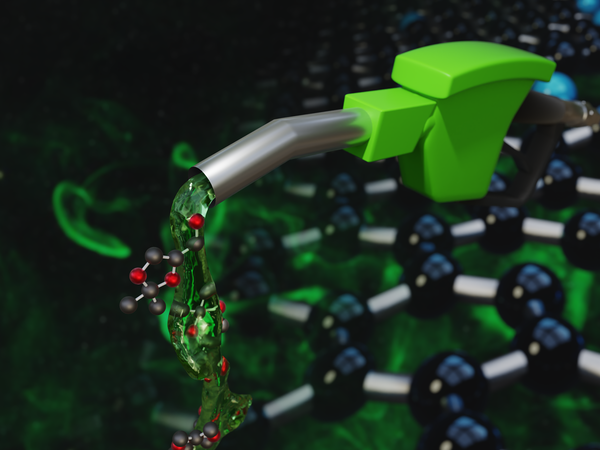Scientists from the Czech Advanced Technology and Research Institute (CATRIN) of Palacký University Olomouc and the CEET and IT4Innovations research centres of the Technical University of Ostrava have developed a unique technology that will enable to use the waste from the production of biodiesel—glycerol—and transform it into useful products, thus increasing the efficiency of existing biofuels. Moreover, the proposed biomaterial based on graphene will replace the acids that have been used to convert glycerol. However, unlike them, it is non-toxic and fully recyclable. The discovery, which was made in collaboration between Czech and Indian institutes, was recently published in the journal Nature Communications.1
Although the production and use of biofuels is currently a hot topic and is also facing criticism, their consumption is growing dramatically worldwide and will continue to play an important role in the coming years. Therefore, the process of their production needs to be optimised. Biodiesel is a green fuel of plant origin and its addition to diesel significantly reduces emissions of toxic gases in the air. However, during the production of biodiesel from vegetable oils, glycerol (aka glycerin) is produced as a waste and is used for example in antifreeze for cars.
“Our goal was to find a way to convert glycerol into a chemical form reusable in the field of biofuels. We used a graphene-based carbon material chemically modified by a natural amino acid”, said Radek Zbořil, CATRIN-RCPTM researcher and Head of Materials-Envi Lab at CEET, at VŠB-TUO in Ostrava.
This ecological material can accelerate the conversion of glycerol into a high added value compound with the highest efficiency achieved so far. The resulting alcohol (so-called solketal) when added to the fuel greatly improves its quality and octane number, reduces undesirable formation of micro-particles, but also emissions of carbon monoxide and other organic toxic substances. Moreover, it increases the viscosity and stability of the biofuel, which is important in terms of long-term storage of biodiesel”, said the first author of the publication, Aby Cheruvathoor Poulose from CATRIN.
The material developed by the scientists is based on the team’s experience in the chemistry of the ‘Nobel material’ graphene, which the teams have been working on, e.g., as part of the European Research Council’s (ERC) prestigious projects. This time round, the desired result was achieved by anchoring a simple amino acid into the graphene structure.
“Experimental and computational studies have shown that it is this amino acid that will significantly increase the ability of graphene to bind reaction components, in our case acetone and glycerol, to its surface. The new biomaterial is significantly more efficient at converting glycerol than previously industrially used acids such as sulphuric acid or hydrochloric acid. But unlike these, it is environmentally friendly. It also allows control of the chemical conversion of glycerol solely towards the production of useful biofuel additives, without any other wastes,” adds Aristeidis Bakandritsos, who works at CATRIN and CEET in Ostrava.
In 2021, the biofuel market exceeded $110 billion, with an expected doubling in size by 2030.2 Biodiesel can be used directly as an environmental fuel for diesel engines, but currently it is added to petroleum-derived diesel. Biodiesel produces approximately 40 billion tonnes of waste glycerol annually, making further use of this waste a huge challenge, especially with regard to the principles of the circular economy. Despite the ever-increasing consumption of biofuels, not only in the European Union are critical voices raised about the waste of food resources and the burden on the countryside. In addition, when rapeseed oil is used as a source for biodiesel production, carbon dioxide emissions occur throughout the whole rapeseed processing chain—from seeding to processing. The overall reduction of the carbon footprint is therefore not entirely optimal, as Czech scientists also point out.
“Personally, I am in favour of the development of carbon-neutral and sustainable fuels, mainly based on hydrogen obtained from renewable sources. We are also intensively engaged in this research.3 However, the production of biofuels cannot be ignored; on the contrary, it is vital to improve this process. The material developed by us can not only exploit waste glycerol from the production of biodiesel, but in pilot experiments it has also proved extremely effective in the actual production of biofuel from vegetable oils, including waste fats. Therefore, we want to continue the research and focus on more efficient conversion of already used waste vegetable oils for the development of second-generation biofuels so that the overall production process of biodiesel is energy and ecologically sustainable and does not damage the agricultural landscape,” concluded Zbořil.
1 https://www.nature.com/articles/s41467-023-36602-0
2 https://www.statista.com/statistics/217179/global-biofuels-market-size/
